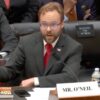Last week, the Department of Health and Human Services (HHS) gave seven more states “conditional approval” to operate state-run Obamacare exchanges.
The announcement came two days after the deadline for HHS Secretary Kathleen Sebelius to determine which states will be ready to run their own exchanges in 2014. So it appears HHS was dressing up its numbers by granting conditional approval to more states—including ones that, in the end, will likely prove either unwilling or unable to set up state-run exchanges.
A handy summary table compiled by the Kaiser Foundation shows that exactly half (25) of the states are a firm “no.” As for the other half, HHS has so far granted conditional approval to 19 of the 21 states that submitted a blueprint for creating an exchange. The two others are Illinois and Mississippi. Mississippi’s governor wrote Sebelius on December 28 restating his opposition and informing her that Mississippi’s insurance department does not have legal authority to continue pursuing its plan for setting up an exchange on its own. The remaining four states have expressed some interest but have not yet even submitted blueprints.
These conditional approvals create the perception that states are moving ahead with implementing Obamacare while obfuscating the reality. At least four of the latest seven conditionally approved states are unlikely to have state-run exchanges in place by the end of the year. Specifically:
1) Idaho, where the legislature seems firmly opposed to the idea, and executive branch activities haven’t gone beyond the initial analysis and planning phase.
2) Arkansas, where the Democratic governor wants a state-run exchange, but the voters just elected Republican majorities to both houses of the state legislature.
3) New Mexico, where earlier this year, the Republican governor vetoed the Democratic-controlled legislature’s exchange bill. The state has an existing small business purchasing market that some of the governor’s advisers would like to morph into a Utah-style market-based exchange. However, given disagreements between the governor and legislature, HHS’s inflexibility, and the limited time remaining, it is unlikely that New Mexico will have a state-run Obamacare exchange in place by the end of the year.
4) Utah, where the state was building its own market-based exchange prior to Obamacare, and has been trying to use it to lever concessions out of HHS but with little apparent success.
As Sebelius noted in all her letters to governors of states granted conditional approval, the approvals are contingent upon their states meeting various conditions, one of which is: “Comply with regulations and expected progress milestones.” If the Secretary continues to take a “my way or the highway” approach with even a state like Utah, which had a pre-Obamacare exchange, she will disabuse even the most credulous of the notion that the Administration will allow state-run Obamacare exchanges to be anything other than branch offices of HHS.
Thus, as it now stands, only 14 to 16 states (plus the District of Columbia) are likely to actually be operating state-run exchanges come October, when open season begins. There may be another two or three states with so-called partnership exchanges, but the feds will be responsible for most of the major functions in those states. Indeed, the final count could be lower as some states trying to set up their own exchanges—faced with significant technical challenges and limited remaining time—give up and default to a federally run exchange.
As it looks now, HHS will need to set up and run federal exchanges in three-fifths to four-fifths of the states. The Obama Administration is about to rediscover the Pottery Barn Rule: “You break it, you own it.”





























